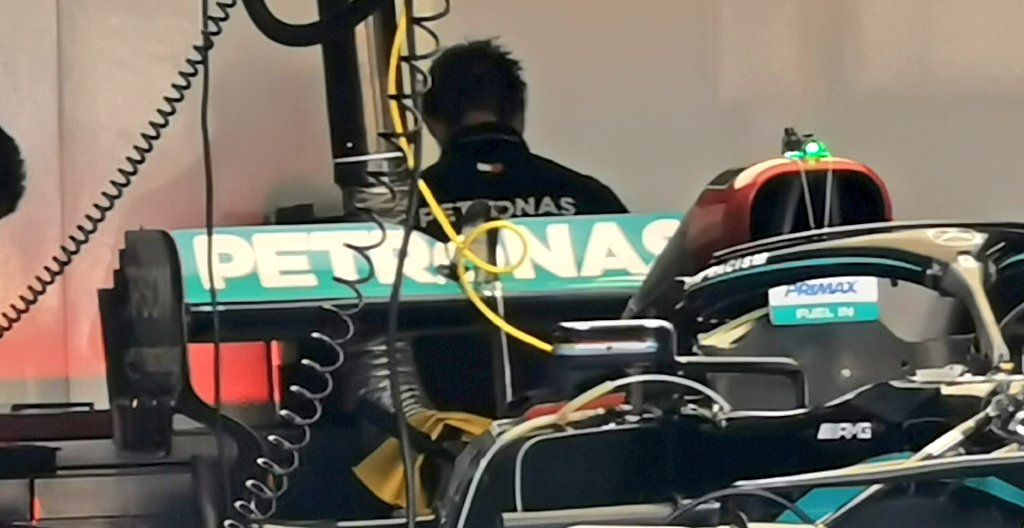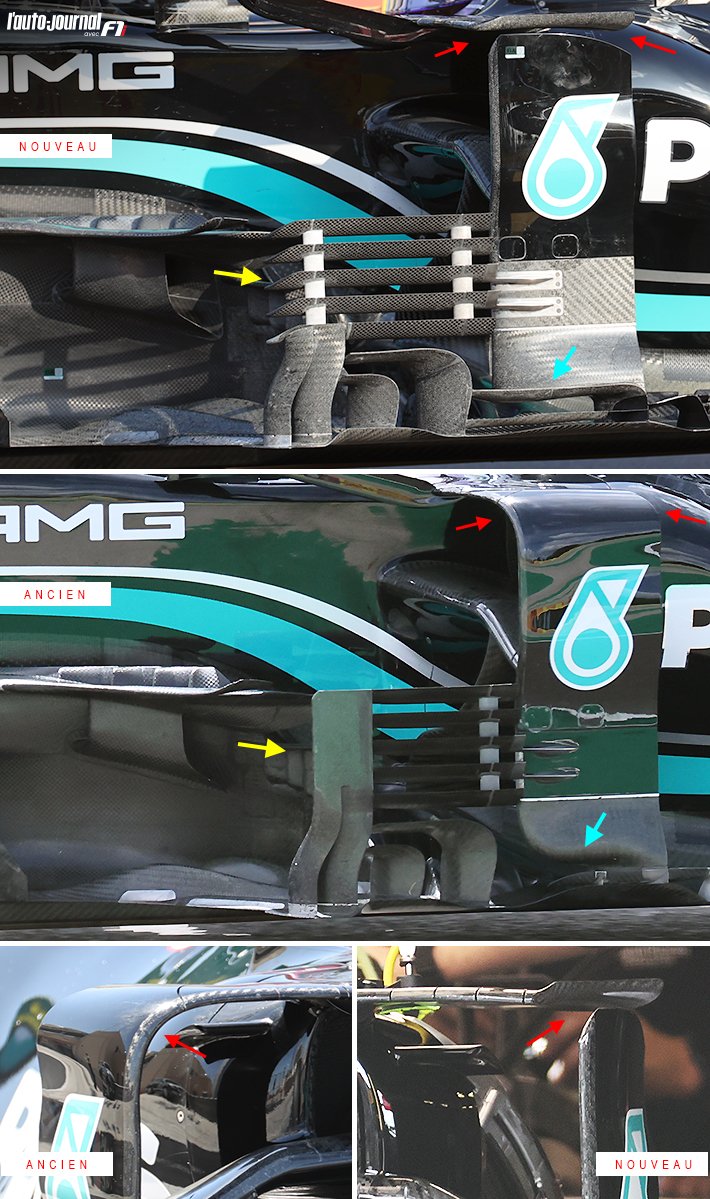Some analysis and explanation of the updates, pictured in the post above ^
https://www.autosport.com/f1/news/the-f ... p/6634074/
And although the characteristics of Silverstone were going to help its chances, key to progress was a much talked about upgrade that had been in the pipeline for a while.
While Red Bull had been pretty aggressive by bringing regular smaller updates, Mercedes had been biding its time to bring something more major at once.
The upgrade focused on the central portion of the car and claws away at some of the aerodynamic issues raised by the 2021 regulation changes.
Rather than incrementally chipping away at these issues, as others have, Mercedes has faced them head-on with one all-encompassing upgrade package.
Here we take an in-depth look at all the changes.
The skyscraper deflector has been shortened, allowing all of the slats in the Venetian blind-like array to be extended forward, increasing their influence on the airflow.
The main skyscraper deflector has been split into two sections, removing the arc that had previously framed the sidepod's shoulder and instead offering two surfaces with which to create vortices.
The sidepod wing now features a design seen almost everywhere else on the grid, with an upward curving tip altering the course and vorticity of the airflow.
It's an interesting U-turn considering that it went down this route with a similar upgrade package for the Japanese Grand Prix in 2019 but reverted to the framed solution for 2020.
There's been numerous changes at this juncture, with not only the first wave in the 'wavy' floor arrangement softened.. The skyscraper deflector now connects to the floor across its entire width, while a third 'r' shaped vane has been deployed.
A dipped section in the floor scroll replaces the deeper wave, while the shape of the flap support has also been altered.
Having shorn the scrolled edge of the floor back, the aerodynamicists have filled that volume with a secondary flap.
The majority of the grid now have angled fins in this position between the sidepod and floor in some form or another, with Mercedes adding four fins to their arsenal, as they look to guide the airflow that's peeling off.
A little further downstream another four fins have been added too, their angle and shape slightly different from those ahead
https://www.formula1.com/en/latest/arti ... cNicu.html
Mark Hughes examines the upgrades Mercedes brought to the 2021 British Grand Prix, where Lewis Hamilton took an eighth Silverstone F1 victory to claw back some vital ground in the title fight with Max Verstappen.
Mercedes switched off their 2021 wind tunnel programme some races ago and devoted it entirely to the 2022 car. But the last pieces of that limited ‘21 tunnel programme were only manufactured and ready to go onto the car in time for the British Grand Prix.
They comprised a totally reworked bargeboard area around the front corner of the floor, a reprofiled floor edge and re-angled deflectors.
The exact geometry changes of the vanes and latticework can be seen in the drawing, but the crucial thing is what they are seeking to achieve. They represent a slight shift in emphasis between the underfloor airflow and that going around the sidepods to eventually meet up with the underfloor flow as it exits through the diffuser.
There is a finite amount of air hitting the car to work with and achieving the most efficient trade-off between directing it beneath and around the floor is at the heart of what the aerodynamicists are striving for.
Mercedes appear to be seeking to extract air from the front corner of the floor, inducing a lower pressure there, which can energise the whole floor, especially if the extracted air is retrained into the flow around the sidepods effectively so as to give more energy to that flow as it meets that which is exiting the diffuser.
The Mercedes’ underfloor is limited in how hard it can suck the car to the ground by its relatively shallow angle compared to a high-rake car. These latest changes seek to offset that effect as far as possible.
It’s difficult to judge how effective they were as the circuit layout is so different to that of the previous races in Austria. Although the Mercedes was the fastest qualifier at Silverstone, that may have owed a lot to the fact that the session was held in the coolest conditions of the weekend when the Red Bull’s front tyres were struggling to quickly reach their optimum temperature.
In all other running, on a track temperature high enough to banish the Red Bull’s tyre problems, the RB16B looked quicker.
But the latest changes will certainly have played their part in Mercedes’ decision to go with a relatively low rear-wing level here. In Austria they were running more wing than Red Bull.
In Silverstone they were running less wing (above). Was this just a reflection on the differing optimum drag/downforce trade-offs between two very different cars on two very different tracks? Or an indication that the Merc’s latest tweaks have allowed them to run the run the car more efficiently?
The picture will build over the forthcoming races. But it’s clear that Mercedes’ last squeeze of the ’21 lemon has delivered at least some juice.










